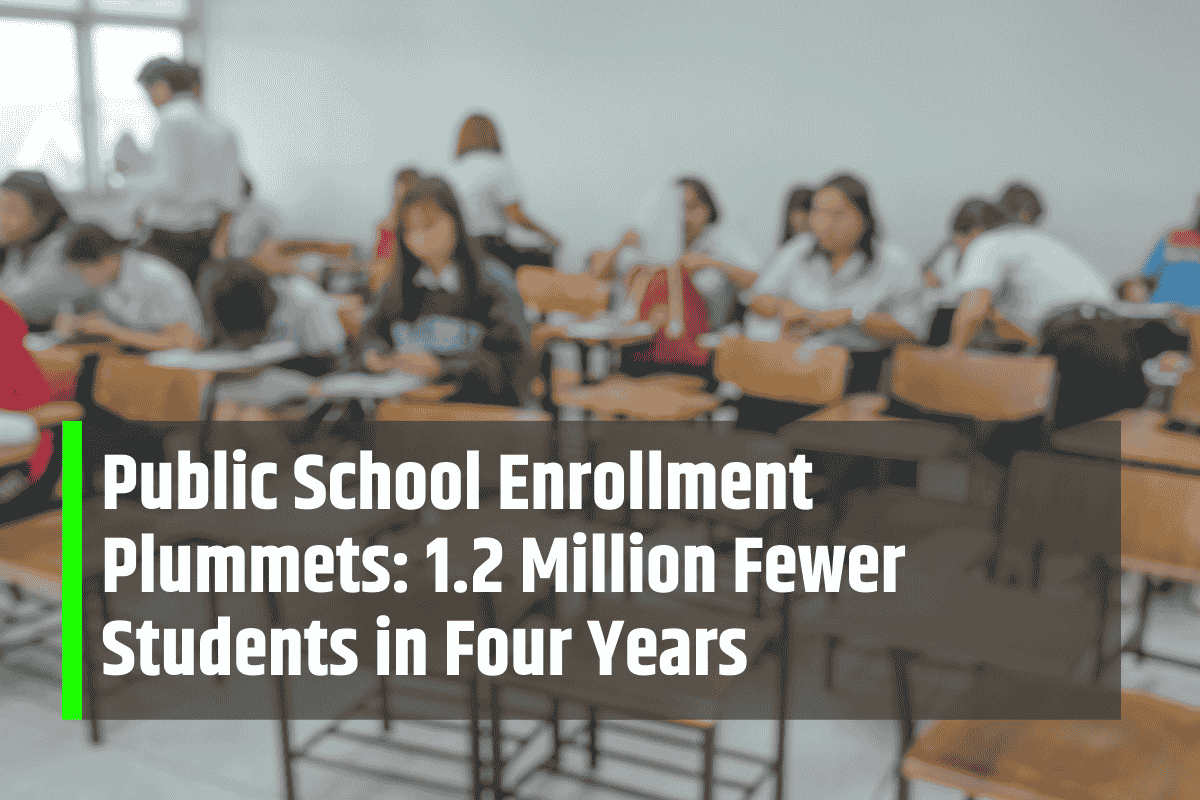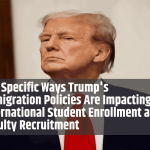Between 2019 and 2023, U.S. public school enrollment dropped by 2.5%, from 50.8 million to 49.5 million students. This marks the steepest enrollment decline in decades, with the youngest grades seeing the most significant decreases.
The decline is not uniform and varies by region, grade level, and demographic group. This article explores the factors behind this trend and its implications for the future of the education system.
Factors Contributing to Declining Enrollment
1. Demographic Shifts
Over the past decade, the U.S. has experienced a steady decline in birth rates. Between 2010 and 2020, the number of children under five fell by 1.8 million.
Additionally, shifts in domestic migration patterns, where families move from high-cost urban areas to more affordable suburban and rural regions, have affected school enrollments in different regions across the country.
2. Pandemic-Driven Changes
The COVID-19 pandemic accelerated existing trends, with many families opting for homeschooling or private schooling due to concerns over remote learning and school closures.
By fall 2022, 3.4% of American children were homeschooled, up from 2.8% in 2019. Private school enrollment also grew by 22% compared to pre-pandemic levels, as families sought alternatives to traditional public education.
3. School Choice and Charter Schools
The expansion of school choice options, including charter schools and private school vouchers, has provided families with alternatives to traditional public schools. These options have become especially appealing in areas where public schools face challenges such as overcrowding, underperformance, or safety concerns.
4. Economic Factors
Rising housing costs and taxes in some areas have forced families to relocate to more affordable regions, impacting public school enrollment in both urban and suburban districts. This migration has contributed to shifts in school enrollment, with some districts experiencing declines while others see growth.
Regional Variations in Enrollment Decline
The enrollment decline is not uniform across the United States. Between 2019 and 2023, 41 states experienced declines in student populations. California saw the largest numeric drop, losing 325,000 students, or 5% of its enrollment.
In contrast, 10 states—mainly in the South and Midwest—saw enrollment growth during this period. These regional differences reflect varying demographic trends, migration patterns, and local policy choices.
Impact on School Districts
1. Financial Strain
Public school funding is often tied to enrollment numbers, so as student populations decline, districts face reduced budgets. This can lead to cuts in educational programs, staff, and resources. In extreme cases, districts may be forced to close schools, impacting the community and students.
2. Teacher Shortages
Declining enrollment can lead to teacher layoffs, exacerbating existing teacher shortages. This is especially problematic in specialized fields like special education and STEM subjects, where districts already struggle to fill vacancies.
3. School Closures
As enrollment decreases, some districts have responded by closing schools. For instance, the Rochester City School District in New York proposed shutting down 11 of its 45 schools due to declining enrollment and financial constraints. These closures can disrupt communities, displacing students and staff.
Looking Ahead: Projections and Strategies
The National Center for Education Statistics projects that public school enrollment will fall below 47 million by 2031. This anticipated decline underscores the need for districts and policymakers to adapt to changing demographics and educational preferences.
Strategies to address this challenge may include reevaluating school funding models, investing in alternative education options, and engaging with communities to better understand their educational needs.
A Complex Challenge for the Education System
The decline in public school enrollment is driven by demographic shifts, economic pressures, and changing educational preferences. While some regions and districts are experiencing growth, many are facing challenges due to declining student populations.
Addressing these challenges will require careful planning, community engagement, and a commitment to ensuring quality education for all students, regardless of shifting enrollment trends.






Leave a Comment